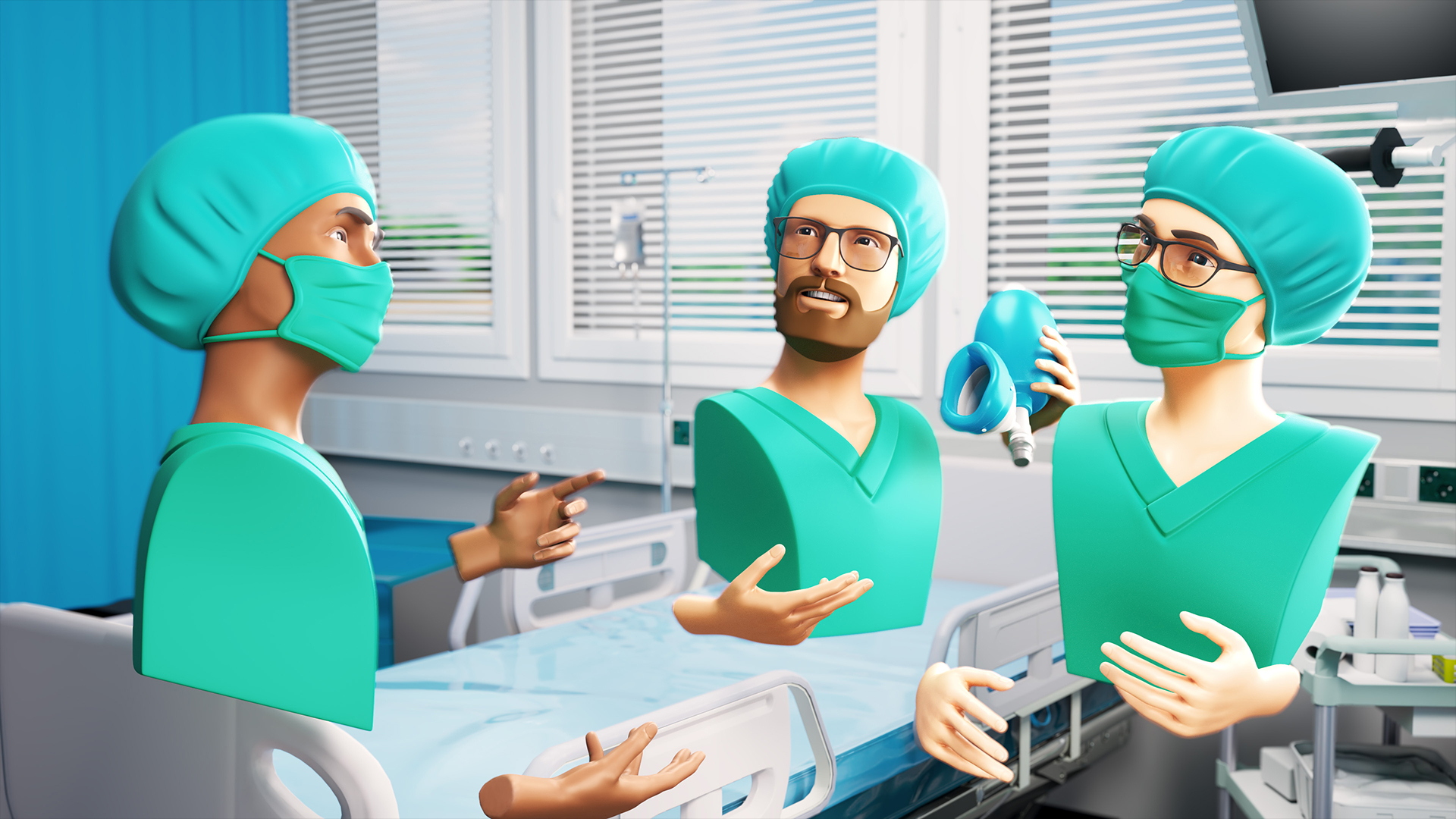VR technology has emerged as a game-changer in healthcare, offering innovative solutions to various medical challenges. From surgical training to mental health therapy, VR is reshaping the landscape of healthcare delivery.
In this blog, we’ll explore how virtual reality transforms medical training and education, providing a safe virtual environment for practice and decision-making, alongside enabling remote learning. This cutting-edge approach enhances healthcare education, making it interactive and accessible to all.
Benefits of VR for Healthcare Industry
Virtual reality brings a multitude of benefits to healthcare. It offers realistic simulations, enhances learning experiences, reduces risks, and improves patient outcomes. Moreover, it provides a safe environment for experimentation and skill development.
1. Enhanced Learning Experiences in Medical Education
VR simulations allow medical professionals to practice procedures repeatedly until mastery is achieved. This hands-on approach improves retention and skill acquisition, leading to better patient care. Additionally, VR fosters collaborative learning environments where students can engage with peers and mentors, further enriching the educational experience.
Moreover, encountering various scenarios, including life-threatening ones, can be infrequent. Even if someone received training for such situations years ago, recalling every detail to act swiftly and accurately when they arise is challenging. Access to refresher training on demand enhances confidence and performance, ensuring better outcomes.
2. Reduced Risks
By simulating complex medical scenarios, VR minimizes the risks associated with real-life procedures. Surgeons can hone their skills without compromising patient safety, ultimately reducing medical errors. Furthermore, VR enables practitioners to explore innovative techniques and strategies in a controlled setting, ensuring they are well-prepared for challenging situations in clinical practice.
Moreover, VR training can replicate real-life scenarios with their natural pressures and distractions in a way unmatched by any other method. Experiencing these scenarios prepares individuals for when they actually happen, boosting confidence and efficiency in their responses.
Applications of VR in Healthcare
The applications of VR in healthcare are diverse and far-reaching. Let’s explore some of the key areas where VR is making a significant impact.
1. Medical Training and Education
VR is revolutionizing medical training and education by providing immersive learning experiences. Medical students can explore virtual anatomy models, participate in simulated surgeries, and engage in interactive case studies, enhancing their understanding and proficiency.
Additionally, VR offers unparalleled efficiency and cost-effectiveness in medical education, as training can be repeated as needed without the need for a teacher’s presence.
For example, our customer Duodecim has developed a true-to-life practice environment that allows staff to put on a VR headset, enter a custom-built Glue space, and safely learn and test their skills on a virtual patient. Check out the full customer story.
2. VR for Psychology and Mental Health
The use of VR in psychology and therapy is emerging as an effective treatment for various mental health conditions, based on various studies. By immersing patients in carefully controlled virtual environments, therapists can help them gradually become less sensitive to triggers, thereby promoting healing. Additionally, the comfort of being at home can contribute to patients feeling more secure and safe during sessions.
Our customer Keski-Suomen hyvinvointialue (Wellbeing Services County of Central Finland) has shared their firsthand experience utilizing VR for individual and group therapy sessions.
“(VR) Participants mentioned feeling more focused on the subject in the virtual world. Additionally, one mentor observed that patients seemed more willing to open up in VR.”- Yolanda Hyde from Keski-Suomen hyvinvointialue
Watch the full video to learn more about the Wellbeing Services County of Central Finland VR use case.
3. Patient Education
VR facilitates patient education by offering immersive experiences that enhance understanding. Patients can explore virtual replicas of their anatomy, visualize treatment procedures, and gain insight into their conditions, empowering them to make informed decisions about their care.
Moreover, VR allows patients to engage with their healthcare journey in a meaningful and interactive way, leading to improved treatment and outcomes.
Conclusion
In conclusion, VR is changing healthcare by providing new ways to teach, treat, and help patients. Its immersive technology can improve how doctors learn, plan treatments, and make patients feel more comfortable during procedures. As VR becomes more common in healthcare, it’s enhancing the quality of medical care for all.
Ready to learn more about team engagement in VR?
Book a demo to explore VR business opportunities
for your business.


